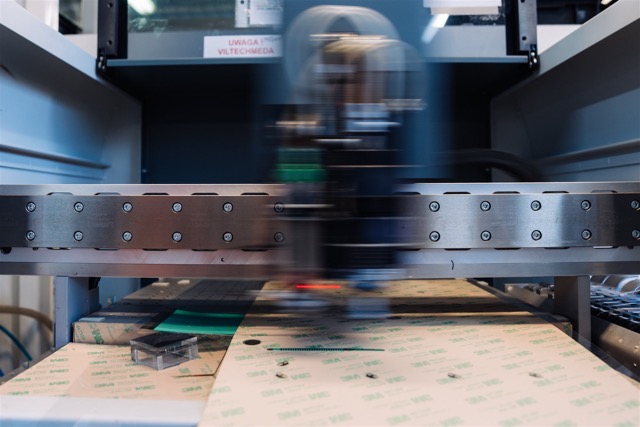Choosing the right production technology for electronic components is crucial for final quality, costs, and process efficiency. For engineers, deciding between Roll-to-Roll (R2R) and Sheet-to-Sheet (S2S) methods isn’t just about speed – it also depends on technical limits and material requirements. Each method has unique uses, and the choice should be based on a detailed analysis of your project’s needs.
Roll-to-Roll (R2R) Technology – When to Choose It?
Roll-to-Roll is a continuous production process where materials are applied to a flexible roll, then wound up. It’s ideal for large-scale production, especially for flexible printed circuits (FPCs), OLED displays, sensors, and thin-film solar cells.
Advantages of R2R:
- High Efficiency and Scalability
R2R can achieve production speeds of 50–100 meters per minute, making it perfect for mass production of consumer electronics or advanced technologies like RFID tags and biosensors.
- Lower Costs per Unit
For large orders, R2R significantly reduces costs. Less material waste and the ability to print multiple layers in one cycle improve cost efficiency.
Limitations of R2R:
- Complex Quality Control and Equipment Costs
R2R requires precise tension control of the roll, leading to high initial investment in production lines. Some materials, especially less flexible ones, are harder to process. - Material Resstrictions
R2R needs flexible substrates like polyimide (PI), PET, or PEN. This method is less practical for rigid PCBs.
Learn more about R2R materials on manufacturer websites:
Sheet-to-Sheet (S2S) Technology – Precision and Flexibility
Sheet-to-Sheet applies materials to individual sheets, processed step by step. It’s ideal for small batches, prototyping, or applications needing high precision.
Advantages of S2S:
- Highest Precision
Sheets can be processed with tolerances as tight as ±5–10 µm. This is key for high-end sensors, microelectronics, or embedded systems with strict technical requirements. - Qider Material Options
Unlike R2R, S2S works with rigid or unusual substrates like ceramics, glass, or FR4 PCB, which can’t be processed on rolls.
Limitations of S2S:
- Lower Efficiency
Handling individual sheets reduces speed compared to R2R, raising costs for large orders. - Limited Automation
Many S2S processes require manual work, increasing error risks and affecting repeatability for big projects.
Find S2S printing materials here:
Technical Tips – Printing Process Differences
- Screen Printing vs. Inkjet Printing
- Screen printing (used in R2R) applies thicker layers (over 10 µm), ideal for conductive paths.
- Inkjet printing (used in S2S) creates ultra-thin layers (under 1 µm), perfect for high-precision tasks.
- At LC Elektronik, we combine both methods.
- Drying and Curing
- R2R uses UV or IR systems for fast curing.
- S2S often uses thermal drying for better material adhesion. We use all methods: thermal, IR, and UV.
- Flexible vs. Rigid Substrates
- Flexible R2R substrates may increase resistance, affecting high-frequency circuits.
- Rigid S2S substrates (ceramics, metal) offer low impedance and mechanical durability.
Summary – Which Method to Choose?
Your choice depends on the project. If you need precision, material variety, or design flexibility, choose S2S. R2R is better for mass production and lower costs.
At LC Elektronik, we specialise in Sheet-to-Sheet technology, offering precise solutions for unique client needs. Contact us to discuss your project or find the best method for your application – we’re here to help!
